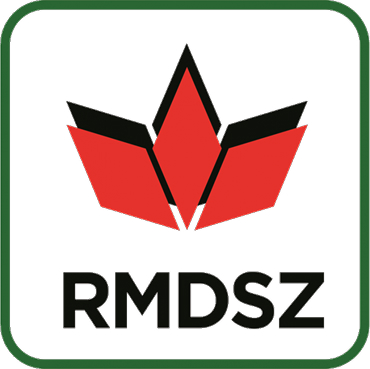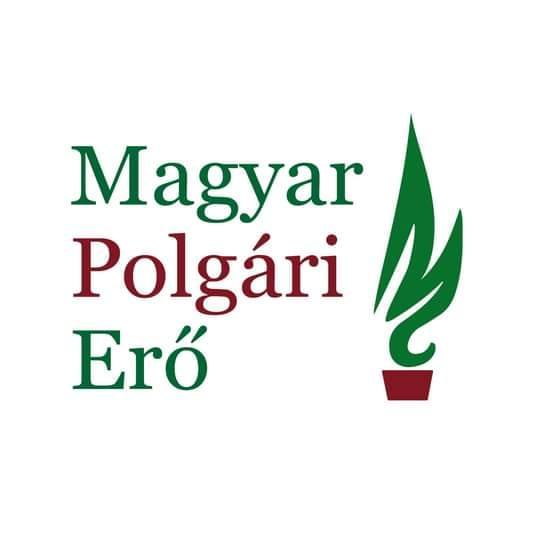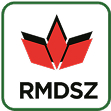Transylvania - Romania
Population
According to the final results of the 2021 census, 1,002,151 people in Romania identified themselves as Hungarian, which represents approximately 6.0% of the total population.
Official sources: Romanian National Institute of Statistics / Recensământ 2021 – results
At the same time, the 2021–2022 Romanian census has sparked controversy, mainly due to incomplete data on ethnicity and religion (more than 2.5 million people, or 13% of the total population, did not declare their ethnicity, native language or religion) distorts the accurate representation of the number and proportion of minorities, including the Hungarian community. According to the RMDSZ, the actual number of Hungarians is probably higher than the 1,002,151 reported in 2022, as up to 100,000-150,000 Hungarians may have fallen into the "no response" category. For this reason, representatives of the Hungarian community emphasise that statistical data cannot be used to undermine the enforcement of minority rights.
About the community
The Hungarian community in Transylvania is Europe's largest autochthonous minority, with a population of over 1 million according to the 2022 census. The Hungarians of Transylvania are descendants of the Hungarian population that has lived in the territory of the historic Kingdom of Hungary for centuries. The community, which accounts for approximately 6% of Romania's population, is concentrated in Szeklerland (Hargita/Harghita, Kovászna/Covasna and part of Maros/Mures counties), where it still constitutes the majority in most settlements. In addition, a significant number of Hungarians live in Partium (Szatmár/Satu Mare, Bihar/Bihor and Szilágy/Salaj counties) and in large cities such as Kolozsvár/Cluj-Napoca, Marosvásárhely/Tirgu Mures, Nagyvárad/Oradea and Szatmárnémeti/Satu Mare. At the same time, members of the community can be found in smaller or larger groups – in diaspora and language islands – in all towns in Transylvania, as well as in the villages and towns of Banat, Southern Transylvania, Maramures and Moldova, Mezőség/Campia Transilvaniei, Kalotaszeg/Calata, in the area of Kis-Küküllő/Tarnava Mica and Szamos/Somes, and the vicinity of Nagyenyed/Aiud. This diversity is reflected in the richness of their cultural and social life, with an extensive network of Hungarian-language educational institutions, press, theatres, churches and associations. From a religious point of view, they are mainly Roman Catholics, Reformed and Unitarians.
History
The Hungarians arrived in the Carpathian Basin around 895-896, gradually populating Transylvania during the conquest. As part of the Hungarian nation and, until the 16th century, the Kingdom of Hungary, and then as an independent principality after Mohács (1526), Transylvania was the cradle of flourishing Hungarian culture and religious tolerance. Later, it belonged to the Habsburg Empire and then, under dualism, to Hungary until the beginning of the 20th century.
The Treaty of Trianon, which ended World War I, annexed Transylvania to Romania, marking the beginning of the Hungarian community's minority status. As part of the 1921 land reform, Hungarian noble and church estates were confiscated and divided up, and the Hungarian language was removed from official use, forcing ethnic Hungarians who did not speak Romanian fluently out of both public administration and the judiciary. Although the Second Vienna Award briefly returned Northern Transylvania to Hungary in 1940, the communist dictatorship after 1945 saw the culmination of the Romanian nation state's efforts to eliminate the community rights and institutions of the Hungarians. Citing the wartime past of the Hungarian minority, mass internments, deportations and imprisonments began as a form of collective punishment. Hungarian schools and universities were abolished or converted into mixed-language institutions, rapidly eroding Hungarian-language education, book publishing and the press.
After 1989, as Europe's largest national minority, we had to start rebuilding from scratch. After the euphoric days of the revolution, it became clear that the struggle for minority rights would be neither easy nor quick: the past three decades have proven that this struggle can only be won with perseverance, patience and an unwavering commitment to democratic values.
Legal background
Although there is no specific minority law in Romania, the rights of national minorities are protected by provisions enshrined in the Constitution.
Based on the principles of equality and non-discrimination, the state recognises and guarantees the right of persons belonging to national minorities to preserve, develop and express their ethnic, cultural, linguistic and religious identity (Romanian Constitution, Article 6).
The state guarantees the right of minorities to learn and study in their mother tongue (Article 32).
At the level of public administration, it stipulates that in administrative units where minorities live in significant numbers, the use of minority languages, both spoken and written, must be ensured in communications with local authorities (Article 120).
In the field of justice, although the official language of court proceedings is Romanian, minority citizens have the right to speak their mother tongue in court, under the conditions laid down by the relevant laws (Article 128).
Minority rights are also mentioned in various other laws, such as the Administrative Code, education laws and even electoral laws.
Education
The Hungarian school system in Romania covers the entire educational spectrum and operates in various forms. Hungarian nurseries provide a native language environment for the youngest children as the first stage of language socialisation. This is of strategic importance in the diaspora, where the decision on which language of instruction to enrol their children in is made in the pre-school years. There are currently 695 Hungarian-language or Hungarian-language sections in state educational institutions with legal personality operating in Romania. Of these, 227 are independent Hungarian-language educational institutions, while 468 are mixed (Romanian and Hungarian sections) schools or lyceums. The institutions are state-maintained, but the role of the churches is also significant: the Roman Catholic, Reformed, Unitarian and Baptist churches all operate Hungarian-language schools and colleges. There are currently 25 educational institutions that are state-maintained but operate under church management and support.
The number of private schools with legal personality is relatively small: one Hungarian primary school (Tálentum, Cluj-Napoca), two post-secondary educational institutions and ten Hungarian private kindergartens. However, with the support of the Communitas Foundation and the Hungarian state, several church and foundation background institutions (e.g. boarding schools for diaspora communities, kindergarten programmes) receive regular supplementary funding.
The three main pillars of Hungarian-language higher education are (1) Babeș–Bolyai University (Cluj-Napoca, Sfântu Gheorghe, Odorheiu Secuiesc, Gheorgheni, Satu Mare, Târgu Mureș) with several faculties and departments offering full Hungarian-language programmes, (2) Sapientia Hungarian University of Transylvania (Cluj-Napoca, Târgu Mureș, Miercurea Ciuc, Sfântu Gheorghe) and (3) Partium Christian University (Oradea) are private universities operating with Hungarian state support.
Thus, Hungarian students in Romania are guaranteed comprehensive mother-tongue education from kindergarten to doctoral level within a network of state, church and Hungarian state-supported institutions.
Language rights
In Romania, language rights are regulated by the Constitution and by specific sectoral laws (public administration, education, justice). According to the constitution, the official language is Romanian, but the state recognises the right of national minorities to preserve their identity and use their own language. Administrative language rights apply to bilingual place name signs, as well as to public notices and information at county councils and mayor's offices and their subordinate institutions, to the use of minority languages in internal and external communication where a minority exceeds 20% of the population of a municipality. The right to full mother tongue education is also a constitutional right. In the administration of justice, the right of minorities to use their language applies to the obligation of the authorities to provide interpreters in criminal proceedings. Similarly, in healthcare, patients have the right to receive information in their mother tongue and to request an interpreter for diagnosis, treatment and consent if there is no staff with the appropriate language skills.
Culture
The basic conditions for certain elements of Hungarian cultural life in Transylvania are in place. We can talk about an independent theatre system, exhibition spaces, a library network, museums, literary and scientific journals, classical music institutions, folk music and folk dance ensembles, book publishers operating in cities with larger Hungarian communities, and bookshops in a significant number of Hungarian-populated settlements. Many iconic buildings of Hungarian cultural heritage have been renovated in recent years.
Mass media
There are several Hungarian media outlets operating in Transylvania:
Newspapers and online newspapers: Maszol, Transtelex, Székelyhon, Szabadság, Háromszék, Népújság, Főtér, Krónika, Székely Hírmondó, Udvarhelyi Híradó - UH.ro, erdely.ma, 3szek.ro, Csíki Hírlap, Bihari Napló, Székelyhon, Brassói Lapok, Aradi Hírek, Erdon.ro, Hargita Népe, Medgyes.ro, Szatmári Friss Újság, szilagysagiszo.ro, szatmar.ro,
TV: Erdély TV, Romanian public television broadcasts daily Hungarian programmes in regional slots (TVR Cluj and TVR Târgu Mureș) and a total of 300 minutes of Hungarian programming nationwide. Online TV stations: CsíkiTV, SzékelyTv,
Radios: Rádió GaGa, Paprika, Erdély FM, Star, City, Plusz FM, Vox FM, Mária Rádió, SepsiRádió, Sláger Rádió, Szépvíz FM, Marosvásárhelyi Rádió, FUN FM, Kolozsvári Rádió, Agnus Rádió, Profi Rádió, Prima Rádió. The public service radio stations in Cluj and Târgu Mureș have 24-hour broadcasts in Hungarian.
Political representation
Under Romanian electoral law, every officially recognised national minority may delegate one representative to the Chamber of Deputies (lower house), even if it does not reach the general threshold of 5% in the election. Since the change of regime, the RMDSZ has managed to exceed this threshold in every election, and therefore forms an independent faction in both the Senate and the Chamber of Deputies and is a full-fledged political player in parliament, currently with 22 deputies and 10 senators. At the same time, the parliamentary entry of regionally supported minority parties (typically the RMDSZ) is also protected by a territorial-based alternative threshold, provided that the party in question remains below 5% nationally but obtains at least 20% of the votes in at least four counties.
According to the electoral regulations governing local and county representation, representation is also guaranteed if 5% of the votes cast at the local or county administrative level are obtained. As a result, 63% of Hungarians in Transylvania live in municipalities led by Hungarian mayors. Following the 2024 elections, the RMDSZ has 205 mayors, 232 deputy mayors, 2,294 local councillors, 4 county council chairpersons, 8 county council vice-chairpersons and 96 county councillors.
In the European Parliament elections, also held in 2024, the party managed to reach the 5% threshold, securing two seats in the European Parliament for RMDSZ candidates.
Politikai képviselet
Statistical data
The region's population: 5,735,228 inhabitants
Hungarian population: 1.100.000-1.150.000 inhabitants (estimation)
Settlements with large Hungarian populations
Târgu Mureș (40,604 – 41.81%)
Sfântu Gheorghe (34,678 – 78%)
Cluj-Napoca (33,603 – 13.91%)
Oradea (33,340 – 18.23%)
Satu Mare (28,152 – 36.3%)
Odorheiu Secuiesc (27,351 – 95.65%)
Miercurea Ciuc (24,873 – 81.5%)
Târgu Secuiesc (13,771 – 92.5%)
Gheorghieni (11,832 – 87.56%)
Brașov (10,942 – 5.41%)
Arad (10,071 – 7.99%)
Timișoara (8,313 – 4.3%)
Baia Mare (8,713 – 9.81%)
Sovata (8,035 – 88.52%)
Carei (8,714 – 52.14%)
Salonta (8,387 – 58%)
Cristuru Secuiesc (7,673 – 94.77%)
Valea lui Mihai (7,098 – 82.8%)
Baraolt (6,736 – 95.8%)
Săcueni (6,672 – 66.72%)
Corund (6,185 – 99.21%)
Zalău (6,108 – 13.46%)
Vlăhița (6,088 – 94.12%).
Useful links
RMDSZ www.rmdsz.ro
RMDSZ Women's Organisation https://nok.rmdsz.ro/
Hungarian Youth Conference https://miert.ro/
Communitas Foundation https://communitas.ro/
National Council of Local Governments https://oot.rmdsz.ro/
Minority SafePack https://minority-safepack.eu/main/index
Transylvania Now https://transylvanianow.com/
School Foundation https://iskolaalapitvany.ro/
Transylvanian Statistics https://erdelystat.ro/
EuroTrans Foundation https://eurotransalapitvany.ro/
A Thousand Years in Transylvania, a Hundred Years in Romania https://ezer100.ro/
Hungarian Public Education https://communitas.ro/main/kozoktatas




